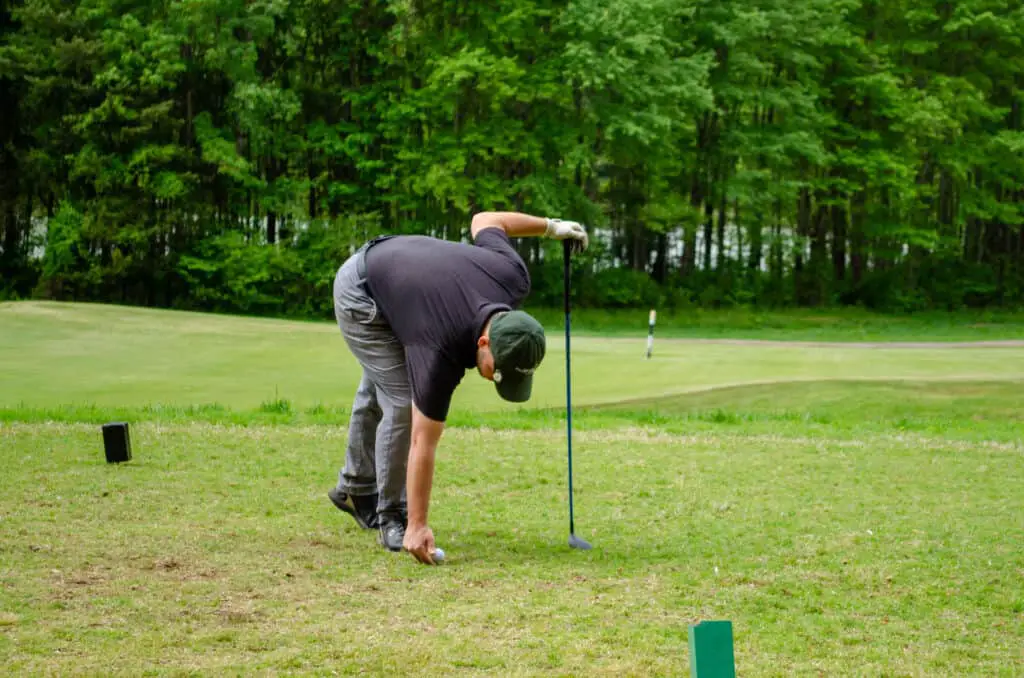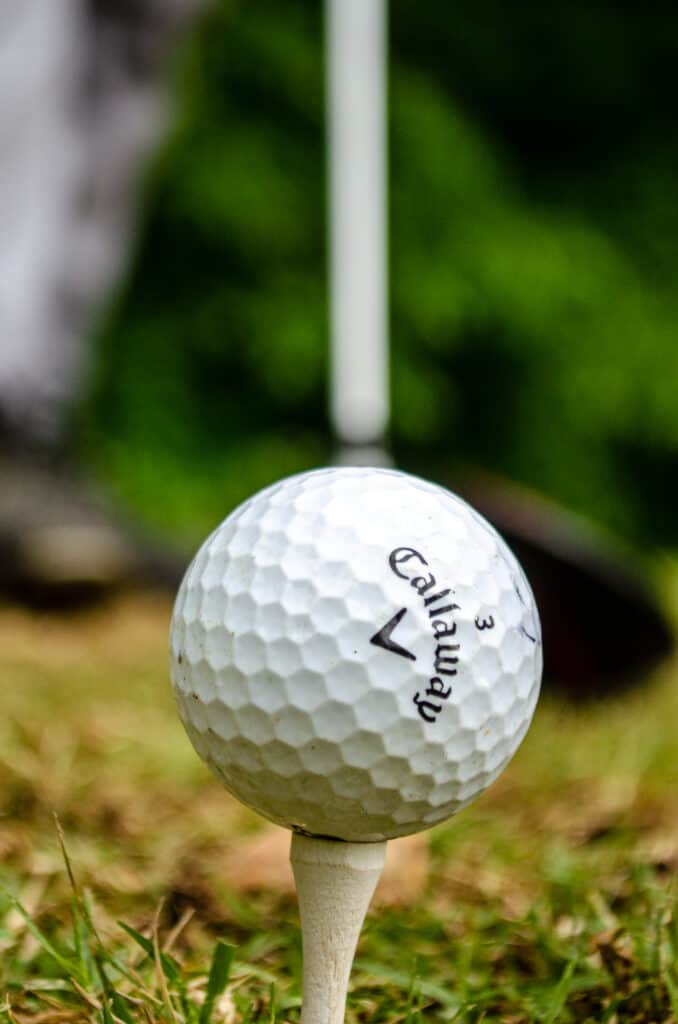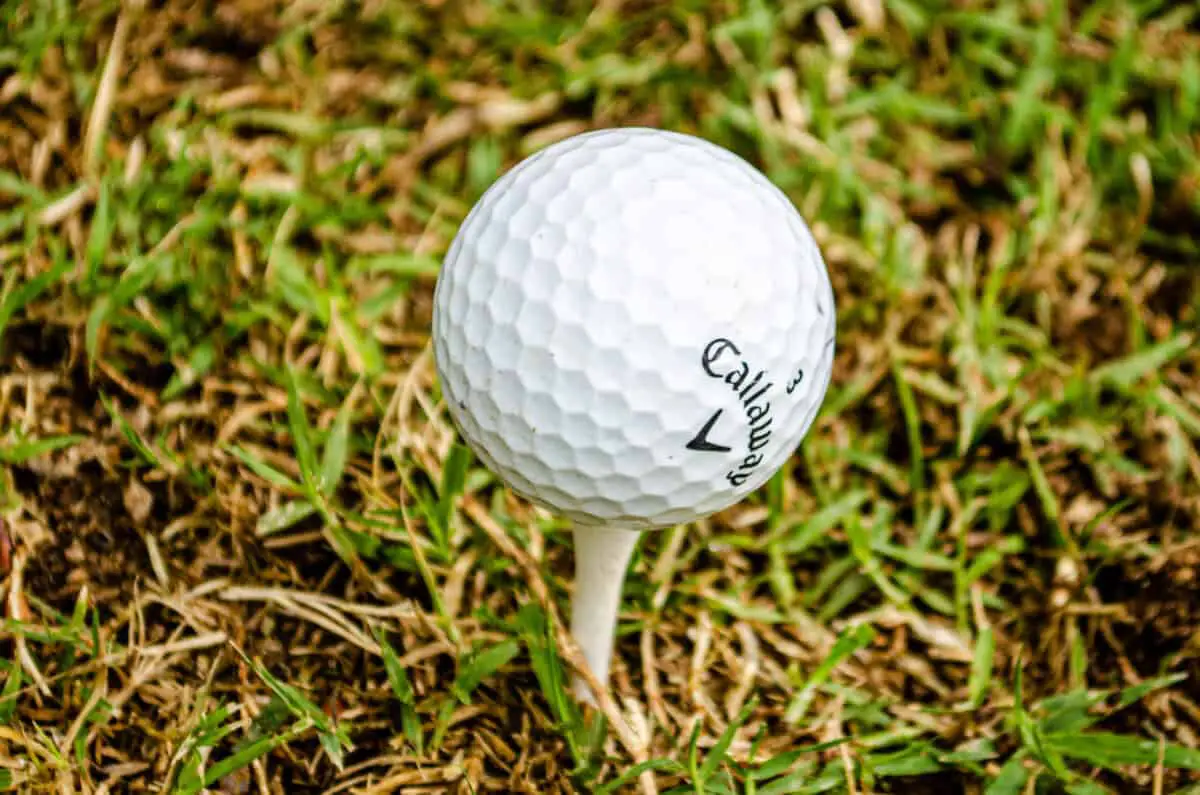Picking up a golf ball, you may see a single number stamped on the front or perhaps even a double or triple-digit number stamped on the ball. What does the number on a golf ball mean, and why are there different ones?
A one digit number is there to differentiate the golf balls, especially if they are the same brand. A two digit number would represent the compression rating of the golf ball, and three digit numbers would indicate the number of dimples on the golf ball.
Let’s tee it up and find out more about the numbers on a golf ball, what they mean, why they were stamped, and if the number colors mean anything.
What Does The Single Digit Number On Golf Balls Mean
There is nothing better than unwrapping a brand new sleeve of golf balls and seeing that shiny new one digit number on the cover before teeing it up on the first hole! There is no denying the allure and thrill you get when you first take out those new balls.

Did you ever wonder what those numbers on golf balls meant and why they have different colors? The single-digit numbers on the golf ball are there so that players can quickly identify their golf ball, especially when two or more players are using the same brand of ball.
Let’s assume there is a four-ball, and every player uses a Srixon AD333 ball. Opening a new sleeve, you will see four balls numbered 1 through 4. Sometimes, these golf balls can be numbered from 0-to 9, but this is not common these days.
If every player gets a new ball, they will each have a different number, allowing them to play the correct ball on the course. The numbers on golf balls themselves have no meaning and are there simply to differentiate the ball from the others.
Does The Color Of the Number Mean Anything
Most golf ball numbers are either printed in red or black on the cover and like the numbers, they have no meaning other than distinguishing the ball from others being played.
Using the four-ball example above, where two players are playing the same numbered ball, e.g., a Srixon AD 333 #2 ball, one player has the red #2, and one player uses the black #2.
Even though both players are using the same number ball, they can quickly identify their ball during play, especially when the two golf balls are close together, and this ensures that they do not play the wrong ball and incur penalties.
What Does The Two Digit Number On A Golf Ball Mean
Unlike the single-digit numbers on golf balls above, the two digit numbers have a meaning other than identifying the ball, which is to indicate the ball’s compression rating. Today’s solid core golf balls don’t often (if ever) have a compression rating, but when golf balls were wound, many had their compression rating stamped on the ball.

Compression ratings ranged from the low 30’s up to 110, and those numbers showed the swing speed level needed to compress the ball. So a golf ball that had the number 30 or 40 double digit number printed on the cover would be rated as more of a ‘ladies’ ball’ requiring a slower swing speed, while a golf ball stamped with 110 would require a very hard swing or high speed.
One of the primary reasons this number was dropped from modern golf balls was that there was a stigma attached to it, and often men wouldn’t buy lower compression golf balls as they were viewed as ‘lady’s golf balls.
Fortunately, these days, the understanding around golf ball compression relative to the golfer’s swing speed and ability has dramatically improved. Both male and female players pick their golf balls based on their swing speed and the type of performance their game demands.
What Does The Three Digit Number On A Golf Ball Mean
Before golf ball manufacturers discovered that adding dimples to the golf ball significantly improves golf ball flight and performance, the golf ball was a smooth sphere. The addition of dimples to the golf ball design revolutionized the game allowing golfers to hit the ball further and impart greater spin consistently.
If you find a golf ball with a three digit number stamped on it, this number indicates the number of dimples that the ball has. Now, while this may not impact your game or performance, some manufacturers still like to boast about the number of dimples their golf ball has.
A 3 digit number indicating the dimple quantity would usually be between 300-400 or more, while numbers on golf balls around 100 to 110 would be more indicative of the compression rather than the dimple numbers.
Most golf balls have between 336 and 500 dimples, and 380-432 dimples seem to be the ideal number of dimples on most golf balls today. If you are examining your golf ball and happen to see the triple-digit number over 300 stamped on it, this tells you how many dimples the ball has.
The Lucky Numbers On A Golf Ball
As with many other sports, golfers are a superstitious bunch, and they often will only purchase golf balls that have their lucky numbers stamped by the golf ball manufacturers on them, and this is why many golfers only play with a no.3 or no.1 or only use black or red stamped numbered golf balls. They will often buy second-hand golf balls to have a bag full of their favorite numbered golf balls!
Perhaps the black and red relate to blackjack or roulette, but whatever the reason, many golfers prefer playing with a certain number printed on their golf balls – are you one of them? Which golf ball number do you like to play with, or do you simply reach into the bag and use whichever comes out?
Golf Ball Numbers Conclusion
In summary, the single-digit represents a simple differentiation between the balls, as does the color of the number. Double-digit numbers on golf balls up to the low 100s indicate the compression rating, and triple-digit numbers on golf balls represent the number of dimples.
And the primary purpose of the numbering on the modern golf balls is for identification purposes when playing a round and your ball ends up close to another of the same golf ball. Most golf ball manufacturers use the same number printed on golf balls in sleeve quantities so you can use the same number for a full sleeve.
Regardless of which number you prefer, there is no evidence that any particular number of golf balls will make you play any better or worse, and hitting a no.4 into the water makes the same splash as a no.1!
- Should Tee Boxes Be Level? - January 23, 2024
- 3 Hybrid Distance - November 15, 2023
- Innovations in Golf Mobility: An In-depth Review of Top Golf Scooters - October 12, 2023
